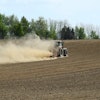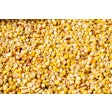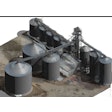
“Because the world is changing very fast.” That was the motto of one of my former employers, and it was quite appropriate for the times. Social media had taken over and news could suddenly travel at lightning speed in a 140-character tweet. The publishing industry was transforming rapidly, and audiences wanted media at their fingertips on new mobile platforms instead of on paper. We worked fast to keep up with their demands.
I was reminded of that slogan recently at the National Grain and Feed Association’s 124th Annual Conference in Austin, TX. Stephen Nicholson, senior analyst - grains & oilseeds for Rabobank, gave a presentation on the future of the grain industry as shaped by consumers, African Swine Fever and geopolitics.
He highlighted one of the fastest moving consumer trends to hit the grain and feed industries recently — plant-based meat. Sure, “veggie burgers” have been offered for decades as an alternative, but they never seemed to take hold with the general public until now.
Today, plant-based eating is a mainstream movement. U.S. sales of meat alternatives grew 30% in 2018 and retail sales of plant-based foods hit $4.5 billion in 2019, according to data from the Good Food Institute and the Plant Based Foods Association.
When Burger King’s Impossible Whopper hit the fast food world last summer, it wet American consumers’ appetite for the new meat and since then the segment’s growth has been exponential. I have never seen a grocery store item go from almost nonexistent to taking up a whole refrigerator case in a matter of months like it did with plant-based beef and chicken at my local supermarket.
While this trend, which many argue is here to stay, might severely cut feed usage, Nichols saw it as a growth opportunity for innovative alternate uses of grain. For example, using soybean oil in bio-chemicals and packaging products or biofuels for airplanes and other vessels.
As we enter an era of slowing growth and demand for grains and oilseeds, businesses will have to change, adapt and implement new technologies to remain competitive. But if there’s anything those in the grain and feed industries can rely on it’s change. Now more than ever, it’s imperative to stay proactive and ahead of the trends because these times are changing very fast. ■










